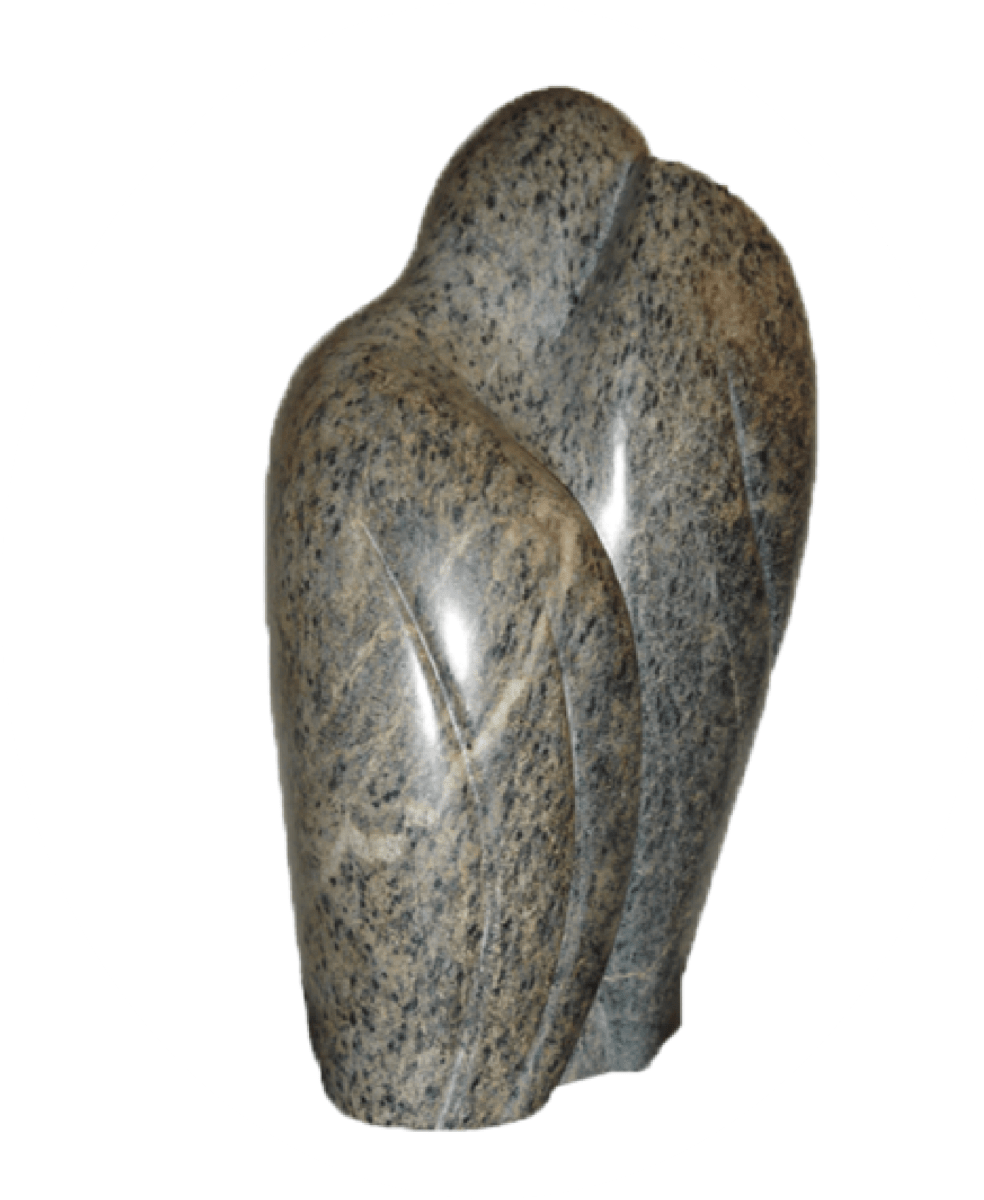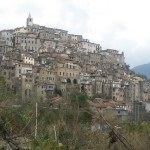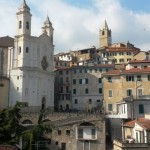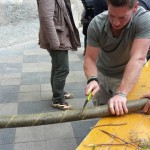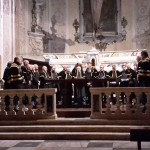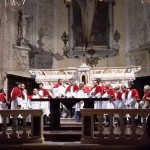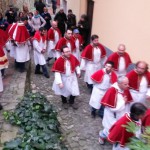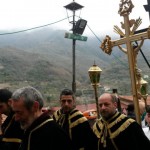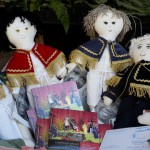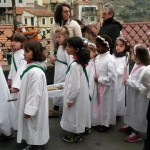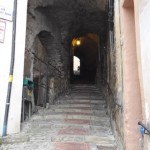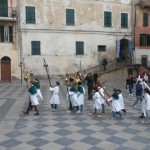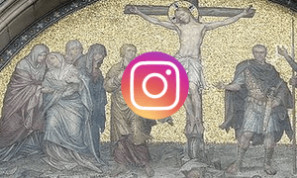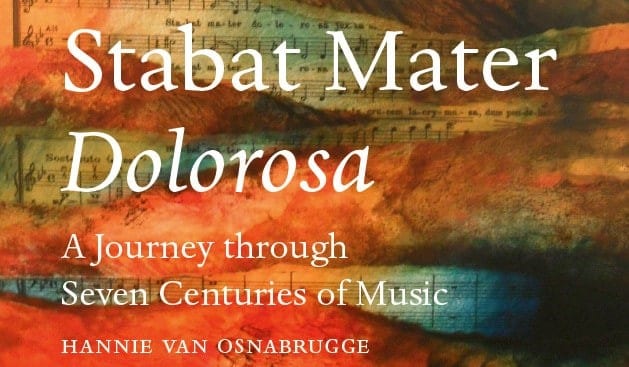Ceriana is one of the places in Italy where the Stabat Mater is sung on Good Friday, during processions through the village. I knew this from the CD Coro della Valle Ceriana, which Hans added to his collection in 2002. This CD has four different Stabat Maters of the four local Brotherhoods, the Black, the Red, the Blue and the Green Brotherhood. Although the CD booklet provides detailed information about the traditions in Ceriana, this is unfortunately only in Italian.
Who ever imagined that I should visit Ceriana myself in 2016! My new love happens to have friends who have been living near Ceriana for more than 30 years, so I was very happy to visit them with him, especially in the week before Easter.
Holy Thursday
I found the program for Settimana Santa in Ceriana in the internet announcements, for Holy Thursday at 2:30 pm: Realizzazione dei tradizionali corni di corteccia in Piazza Marconi. We have no idea what is going to happen there. On the Marconi Place in front of the Church of St Peter & Paul we see a few men carrying tables. The tables are put down at the edge of the square. Another man arrives with a wheelbarrow full of small trunks from chestnut trees. With a knife, actually a little saw, they carve a nick into the trunk, from top to bottom. After that the bark has to be removed from the trunk. The bark is rolled into the shape of a horn. The horn produces a very dark sound. It is a difficult job. Sometimes the bark breaks into two or three pieces. These are then used to make small horns, to be given to the children.
Mass
The horns are used during the mass in church that evening. The church is not really full. We see about ten men of the different brotherhoods. They are dressed in a white robe and wear a black, red, blue or green cape around the shoulders. The black brotherhood does not have a white robe but a black one. We expect the brotherhoods to sing during the mass, but that does not happen. When the mass is over, no one leaves the church and after a while the men of the black brotherhood enter the church, singing. They are preceded by men and by boys and girls carrying crosses, and by children with symbols referring to the crucifixion of Christ. Four children are carrying a box with the dead body of Christ and a boy is hitting the box with a rope, symbolizing the scourge of Jesus. The men of the brotherhood line up in a semicircle behind the altar, singing their songs among which the Stabat Mater. During the singing of Miserere they walk out of the church in a procession and after a while the next brotherhood enters. They all get their turn, the red brotherhood after the black, then the blue and finally the green brotherhood.
Good Friday
The next day is Good Friday, the day of the proper processions. Every brotherhood starts from its own oratory, a sort of chapel, to the Church of St. Peter and Paul. From there the brotherhoods are going through the narrow streets and little alleys of the medieval village. Every brotherhood, preceded by children and men carrying crosses, visits all oratories of the other brotherhoods. They sing polyphonic, continuously Miserere, a Lauda and of course Stabat Mater. Everywhere you can hear the sound of the singing men and sometimes the horn of the chestnut. All the villagers of Ceriana are there, it seems. People are happy. The atmosphere is informal, not at all sacral or religious. An annual ritual that radiates togetherness and harmony. How special it is to participate in this, in this beautiful village where the people are so kind!
Saturday
On Saturday I buy a CD of Compagnia Sacco di Ceriana, a group of seven male singers. Compagnia Sacco is founded in 1926. On this CD they sing sacral songs from the brotherhoods of Ceriana, including two Stabats (from the red and the blue brotherhood). Their repertoire is in fact not only religious. They also sing many traditional secular Italian songs. On the picture in the CD booklet we recognize two men who sang in the red and the blue brotherhood on Good Friday. Compagnia Sacco is famous. They have performances all over the world.
